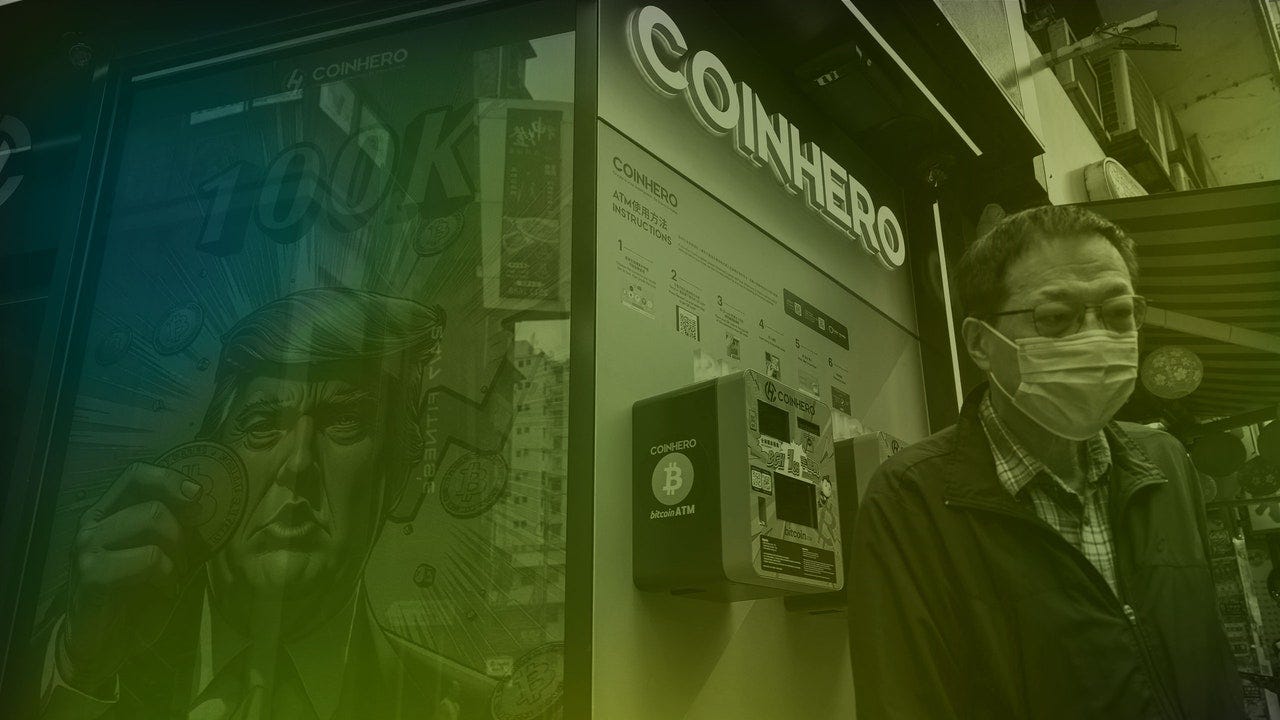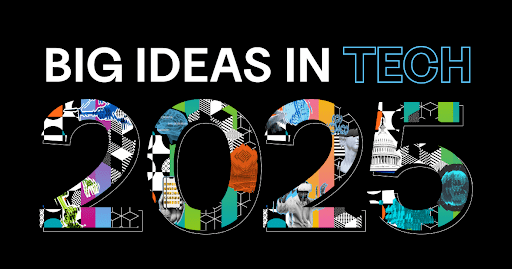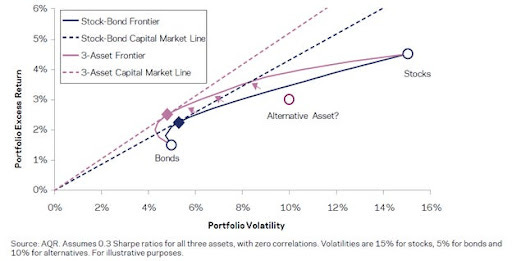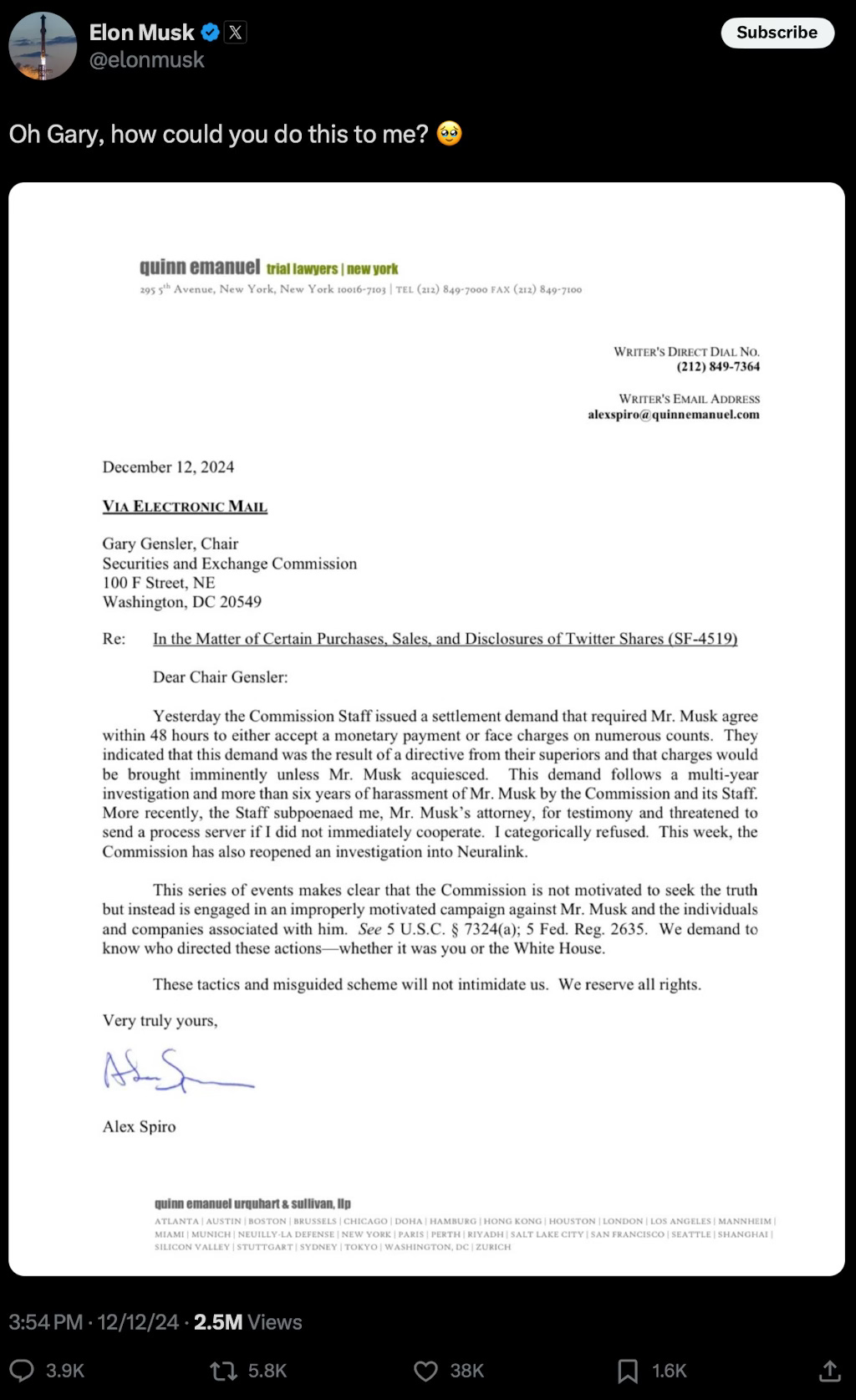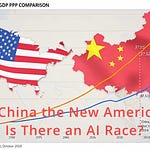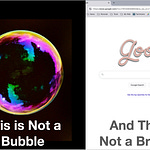Hat Tip to this week’s creators: @JohnCassidy, @paulkrugman, @rex_woodbury, @JTLonsdale, @Om, @mgsiegler, @deanwball, @sundarpichai, @a16z, @davidu, @benthompson, @stratechery, @cademetz, @GoogleQuantumAI, @rhodgkinson, @geneteare, @michaelsayman, @ajkeen, @RiversidedotFM, @elonmusk
Contents
Editorial: I’m With Musk
Post Election
AI
Tech
Venture Capital
Michael Sayman and Andrew Keen
Riverside
Elon Musk and the SEC
Editorial: I’m With Musk
What a week in AI. The new OpenAI models - o1 and Sora - were released. Google released Gemini 2.0 and a host of other models. Early reviews are very complementary. Google also announced a breakthrough in quantum chips capable of excellent error correction, opening the way for scale and useful applications.
There is now a new narrative in AI that predicts a relatively short path to a state where multiple AI agents can be working on pretty much everything. Google Gemini 2.0 was launched with that explicit set of expectations.
In the midst of this accelerating innovation Elon Musk is increasingly the target of law suits and hatred, particularly from those who would have preferred him to support the Democratic candidate in the election.
Today it was revealed that the SEC has been blatantly blackmailing him regarding his purchase of Twitter, This week’s Post of the Week is from Musk, publishing his attorney’s response to SEC pressure. This from the letter:
Yesterday the Commission Staff issued a settlement demand that required Mr. Musk agree within 48 hours to either accept a monetary payment or face charges on numerous counts. They indicated that this demand was the result of a directive from their superiors and that charges would be brought imminently unless Mr. Musk acquiesced. This demand follows a multi-year investigation and more than six years of harassment of Mr. Musk by the Commission and its Staff.
More recently, the Staff subpoenaed me, Mr. Musk's attorney, for testimony and threatened to send a process server if I did not immediately cooperate. I categorically refused. This week, the Commission has also reopened an investigation into Neuralink.
Musk has no intention to agree to these terms so we can expect the temperature to be raised.
Lawfare is the new term to describe this kind of behavior. And the outgoing SEC management are clearly intent on using it.
Now, clearly, Elon Musk is a controversial character. But he is very direct, transparent and nothing if not honest. His Twitter acquisition, widely assumed to be crazy, now appears (at least to me) fully vindicated. He certainly did nothing illegal as far as we know.
The letter sums up his attorney’s belief:
This series of events makes clear that the Commission is not motivated to seek the truth but instead is engaged in an improperly motivated campaign against Mr. Musk and the individuals and companies associated with him. See 5 U.S.C. § 7324(a); 5 Fed. Reg. 2635. We demand to know who directed these actions- whether it was you or the White House.
These tactics and misguided scheme will not intimidate us. We reserve all rights.
The letter is addressed to SEC Chair, Gary Gensler.
I suspect we will see more and more of this. At a time when democracy is under no threat (as Steve Gillmor notes on substack, Trump winning helped save democracy. Had he lost we may be in a different place) Musk is becoming the new target of those who remain angry at the result of the election.
Trump is getting off quite lightly.
Why is this worth caring about? Because it seems that the new administration is prepared to bring builders into the administration to better prepare the future. These people are “billionaires and millionaires” as they are described in the media. But they are that because they build valuable things.
Without them I have no idea what a positive narrative about modernization and growth would be.
With them I can imagine a real conversation about change.
Aaron Levie, founder of Box.net, on X this week summed it up:
He ended a longer piece with:
America has the opportunity to be at the forefront of every one of the major industries of the future. We have the talent, educational system, basic research, venture capital, stock market, high skill immigration, customer bases, and global partnerships to lead across these spaces.
Now we just need to make sure we modernize the government to ensure this happens.
I might replace ‘America’ with ‘Humanity’ but other than that I solid concur.
This week’s essays include great ones by Joe Lonsdale on defense tech and war, a less clearly goof piece by newly free journalist and economist Paul Krugman on why innovation is centered in America, and a piece by John Cassidy of Internet Bubble fame on the Crypto bubble.
Enjoy.
Essays of the Week
How Long Will the Trump Crypto Boom Last?
Author: John Cassidy | Source: The New Yorker | Published: 2024-12-13 | Reading Time: 6 min | Domain: newyorker.com
Summary: This article examines the surge in crypto markets following Donald Trump’s election victory and his announcement of Paul Atkins, a known cryptocurrency proponent, as the next head of the Securities and Exchange Commission (S.E.C.). It draws a parallel to the late-1990s dot-com bubble, noting that similar conditions for a speculative boom are now coalescing around crypto: a promising (if not fully realized) new technology, easy ways to spread hype via social media, increased involvement from the financial industry, and now, for the first time, a policy environment poised to be highly favorable.
Under the Biden Administration’s S.E.C. chair, Gary Gensler, the agency took a tough stance on crypto, filing lawsuits against major players like Coinbase and Ripple, and asserting that many crypto assets should be regulated as securities. By contrast, Atkins’s appointment signals a likely rollback of strict enforcement and a push to treat more crypto products as commodities rather than securities, significantly easing the regulatory burden. Legislative moves could further tilt the playing field in crypto’s favor, while the Federal Reserve shows no immediate intention to rein in crypto enthusiasm.
Wall Street is also embracing crypto by offering Bitcoin-based investment funds, making it easier for ordinary investors to buy in. This newfound regulatory and financial-system support could give crypto assets a sheen of legitimacy—and potentially inflate a large speculative bubble. Critics worry that a surge in crypto speculation might lure regular households into risky bets, inflating a bubble that could eventually burst. How severe the fallout might be depends on how deeply crypto intertwines with the broader financial system. So far, banks and regulators have kept a wary distance, but with a more crypto-friendly White House, that separation could weaken.
In essence, the article suggests that Trump’s pro-crypto stance is setting the stage for a major, government-endorsed crypto boom. But as history with the dot-com era and other speculative manias shows, when all four legs of a bubble’s table—technology, mass communication, industry backing, and policy support—are firmly in place, a painful bust may eventually follow.
Why Does U.S. Technology Rule?
Author: Paul Krugman | Source: paulkrugman.substack.com | Published: 2024-12-12 | Reading Time: 8 min | Domain: paulkrugman.substack.com
Summary: In this essay, Krugman explores why the United States dominates global technology, especially digital tech, and whether that advantage truly reflects broad national strengths or something more localized. He begins by observing a paradox: while Europeans and others often envy U.S. economic performance, the U.S.’s apparent tech supremacy isn’t really spread evenly across the country. Instead, it’s concentrated in a few key geographic clusters, primarily Silicon Valley and, to a lesser extent, the Seattle area. These hubs are home to nearly all the major American tech giants, suggesting that America’s lead might not be a purely national phenomenon but rather the product of a few intensely innovative regions.
Krugman recalls that, before around 2000, the U.S. didn’t look so uniquely productive compared to other advanced economies — Europe’s technology and productivity levels were broadly comparable. Since then, a significant gap has opened up, driven almost entirely by the information and communications technology (ICT) sector. The rest of the economy doesn’t differ much from Europe’s in terms of productivity.
To explain why certain industries thrive in specific places, Krugman turns to the classic idea of industrial clustering described by economist Alfred Marshall. When specialized firms and skilled workers gather in one location, knowledge spreads easily, helping the entire cluster become more innovative and efficient. Over time, these clusters persist because of local “knowledge spillovers,” even after the original reasons for their existence (like a particular university or a visionary entrepreneur) have faded.
He suggests America’s tech lead is less about a special national genius or distinctive policy framework and more about “Silicon Valley dominance.” Silicon Valley, historically rooted in a combination of early tech pioneers, proximity to research institutions, and lucky accidents, became the world’s leading high-tech cluster. This, in turn, nurtured a vibrant venture capital ecosystem right next door, making it easier to fund and scale innovative startups.
Europe, by comparison, lacks a similarly scaled and established tech hub. Without that concentration of talent, investors, and know-how, Europe finds it hard to break into the top tier, despite trying to replicate American approaches. As a result, the U.S. gains not only from its dynamic tech centers but also indirectly, as the financial and professional services supporting these clusters benefit from the same high-productivity environment.
Krugman concludes by noting two big unresolved questions: first, how much do these high-productivity clusters actually benefit the rest of the U.S. economy? And second, can Europe (or anywhere else) create its own cluster to challenge American tech dominance? While he doesn’t offer final answers, the essay reframes U.S. tech supremacy as less of a national trait and more an accident of geography and history that continues to pay dividends for the clusters that formed first.
10 Charts That Capture How the World Is Changing
Author: Rex Woodbury | Source: Digital Native | Published: 2024-12-11 | Reading Time: 7 min | Domain: digitalnative.tech
Summary:
Venture Capital's Power Law
Venture capital returns are heavily skewed, with a few companies driving the majority of returns.
Sequoia, Benchmark, Index, and a16z are identified as firms with the most investments in companies achieving $5B+ valuations.
VC Fund Cycles and Secondaries
Venture capital inflows greatly exceed outflows, creating liquidity issues for Limited Partners (LPs).
Companies are staying private for longer periods, leading to a boom in the secondary market as investors seek liquidity.
The age and revenue of companies going public have significantly increased, reflecting a shift in the tech landscape.
The Rise of Video Consumption
Video has become the dominant form of internet traffic, accounting for around 65% of internet traffic in 2023.
Digital video consumption among Americans continues to rise.
The introduction of AI video generation models, such as OpenAI's Sora, could lead to an explosion of video content creation and consumption, with the line between real and AI-generated videos becoming increasingly blurry.
Our Duties as Defense Technologists
Author: Joe Lonsdale | Published: 2024-12-12 | Reading Time: 9 min | Domain: blog.joelonsdale.com
Summary: enemies
The founder of Palantir Technologies - Joe Lonsdale - reflects on the responsibilities and moral considerations for those working in the U.S. defense technology sector. Starting with his experience at Palantir during the post-9/11 era, Lonsdale recounts how he and his peers helped the government prevent attacks and combat terrorism. Over time, as global threats evolved—particularly with the rise of an increasingly authoritarian China—he and other technologists felt compelled to re-engage in defense work, founding and investing in companies like Anduril, Epirus, and Saronic Technologies.
Lonsdale notes that once-rare support for defense innovation in Silicon Valley has now become far more mainstream, thanks to a growing consensus around rising international dangers. Yet, in the midst of this “victory” for the defense-innovation mindset, he urges caution. He reminds those entering the sector that building military technology isn’t just about making money or chasing growth: it comes with serious civic duties. Echoing President Eisenhower’s warnings about the “military-industrial complex,” Lonsdale encourages entrepreneurs and investors to remain conscious of the powerful incentives that could subtly push them toward militarism or permanent conflict.
In essence, Lonsdale’s message is that the defense tech industry is crucial to deterring adversaries and preserving peace—but it must be approached with moral clarity and a steadfast commitment to the country’s democratic values. Citizens first, technologists second, defense innovators should strive to maintain their integrity, ensure accountability, and ultimately serve the goal of a just and stable peace.
Why AI will eat the browser
Author: Om Malik | Source: On my Om | Published: 2024-12-08 | Domain: om.co
Summary:
1. The Browser’s Legacy Role:
Historically, the web browser has been the central gateway to the internet and all its information. Most people can’t imagine using the internet without one, as it has long been the primary means of navigating the web, finding content, and interacting online.
2. Emergence of AI and New Interfaces:
With the advent of artificial intelligence—particularly generative AI and large language models—information is increasingly being served in a more context-aware, conversational manner. AI can deliver direct answers or insights without requiring users to manually browse multiple webpages.
3. Shift Toward Immersive and Device-Specific Interfaces:
As computing moves beyond keyboards and screens toward more immersive experiences—like augmented reality (AR), virtual reality (VR), voice interfaces, and wearables—the two-dimensional, link-based navigation model of the browser starts to feel outdated. These new devices and environments favor interfaces where AI-driven assistants can find, filter, and present information seamlessly.
4. Diminishing Relevance of Traditional Web Navigation:
If AI can fetch information directly from various sources and present it as a personalized answer stream, the need to manually “browse” through a series of hyperlinks diminishes. In immersive environments (e.g., VR headsets), a browser window seems like an afterthought rather than a primary tool.
5. Potential Future Scenarios:
Over the next decade, if AI becomes the main intermediary between users and content—pulling knowledge from various sources without users needing to navigate pages—the web browser’s importance could fade. Traditional browsing might become a secondary option for specialized tasks, while AI-driven interfaces become the default mode of interaction.
Conclusion:
The article suggests that while browsers have long been central to how we experience the internet, the rise of AI and new, more immersive interfaces could gradually make the traditional browser model feel obsolete. AI might “eat the browser,” reducing our reliance on it as we shift to conversational, context-aware information retrieval methods that transcend the old paradigm of navigating links and pages.
Sora Slaps
Author: M.G. Siegler | Source: Spyglass | Published: 2024-12-11 | Reading Time: 4 min | Domain: spyglass.org
Summary: The text discusses the recent advancements in generative AI technology, specifically OpenAI's video-generation tool called Sora. The author reflects on the early days of using DALL-E, OpenAI's first image-generation tool, and compares it to the current state of generative AI. The author also discusses the hype surrounding "Web3" and "crypto" and how it has led to a crash and shakeout of actual technology to use. The author acknowledges that there may be some "bullshit" and "charlatans" in the generative AI space, but believes that it is starting off on a different footing and has the potential for true utility. The author also mentions the rush towards "agents" and how OpenAI's Sora
Thresholds - by Dean W. Ball
Author: Dean W. Ball | Source: www.hyperdimensional.co | Published: 2024-12-12 | Reading Time: 14 min | Domain: hyperdimensional.co
Summary: This article discusses the evolution of technology, focusing on the incremental improvements ("thresholds") that lead to significant changes. The author uses the iPhone as an example, highlighting how its capabilities gradually improved over time, eventually transforming society.
The article then delves into OpenAI's new language models, o1 and o1 pro, arguing that they represent another crucial threshold. These models excel in reasoning and complex problem-solving, potentially revolutionizing fields like science, law, and policy analysis. However, the author also raises concerns about the models' potential for scheming and manipulation, emphasizing the need for transparency and responsible development.
The author concludes by predicting that AI agents, capable of taking actions on behalf of users, will soon be a reality, further accelerating the impact of AI on society. He anticipates a future where knowledge work is increasingly augmented by AI, prompting questions about the future of work and the evolving relationship between humans and AI.
Introducing Gemini 2.0: our new AI model for the agentic era
Author: Mat Velloso | Published: 2024-12-11 | Reading Time: 11 min | Domain: blog.google
Summary: The article presents Gemini 2.0 as Google’s next big leap toward “agentic” AI models. It details new features enabling more complex tasks, native multimodality, and real-time tool use. Safety, responsibility, and careful testing are central to its approach. The long-term vision is to move beyond information organization to AI that can actively help users solve problems, adapt to various contexts, and pave the way toward general-purpose AI.
1. Introduction to Gemini 2.0 and the “Agentic Era”
Core Idea:
Gemini 2.0 represents Google and Google DeepMind’s next major step in AI, evolving from understanding and organizing information to enabling more active, autonomous capabilities. This includes models that not only comprehend text, images, and audio but can also take actions on behalf of users (agentic behavior).
Key Points:
• Builds on the earlier Gemini 1.0 models, which introduced multimodality and long context understanding.
• Aims to become a “universal assistant,” capable of handling tasks proactively and reasoning across multiple steps.
2. Advancements in Multimodality and Native Tool Use
Core Idea:
Gemini 2.0’s “Flash” model supports both multimodal inputs and outputs (text, images, audio) and can natively use tools like Google Search, code execution, and third-party integrations.
Key Points:
• Faster, more capable performance compared to previous Gemini models.
• Natively generated images and steerable text-to-speech audio.
• Real-time handling of video, audio streaming, and combined tool usage via a new Multimodal Live API.
3. Enhanced Reasoning and Long Context
Core Idea:
The new model is better at complex reasoning, following intricate instructions, and understanding larger amounts of information over longer periods (long context).
Key Points:
• Stronger reasoning for tackling complicated tasks, like advanced math or multi-step instructions.
• Ability to plan actions, not just react, and maintain stateful conversations over time.
4. Agentic Research Prototypes and Real-World Explorations
Core Idea:
Google is experimenting with prototypes that demonstrate how Gemini 2.0’s agentic capabilities might be integrated into products and tasks, moving AI from passive assistant to active problem-solver.
Prototypes Introduced:
• Project Astra: A universal AI assistant prototype that integrates with your phone to handle searches, maps, and Lens usage, with improved memory and latency.
• Project Mariner: A browser-based agent that can interact with and reason about what’s on your screen, complete tasks, and navigate web pages.
• Jules: A code-oriented agent that integrates with GitHub, can plan and execute coding tasks, and assist developers directly in their workflow.
Additional Domains:
• Gaming: Agents can reason about game environments in real-time, offer guidance to players, and use external knowledge from Google Search to improve gameplay assistance.
• Robotics: Early-stage exploration of how these agentic capabilities can translate into understanding and interacting with the physical world.
5. Integrating Gemini 2.0 into Products and Tools
Core Idea:
Gemini 2.0 is already available in some form to developers (via APIs and early-access features) and will be rolled out to more Google products, including the Gemini AI assistant, in the coming months.
Key Points:
• Updates to Search with advanced reasoning from Gemini 2.0, enabling complex, multimodal, and coding queries.
• New “Deep Research” feature in Gemini Advanced acts as a research assistant for complex topic exploration.
6. Responsible and Safe Development
Core Idea:
Building agentic AI requires careful consideration of safety, ethics, and user trust. Google emphasizes a slow, iterative, and safety-first approach as they explore these new capabilities.
Key Points:
• Continuous involvement of internal responsibility and safety committees.
• Enhanced red-teaming and mitigation strategies, like preventing prompt injection, misuse, and inadvertent disclosure of sensitive information.
• Gradual rollouts, restricted trusted testers, and extensive evaluations before widespread deployment.
7. Setting the Stage for the Future
Core Idea:
Gemini 2.0 is described as a significant milestone on the path towards more capable general-purpose AI (AGI). The model’s agentic and multimodal abilities are seen as stepping stones to more transformative experiences.
Key Points:
• Today’s release is one phase of a longer journey.
• Ongoing research, feedback, and iteration will guide how Gemini’s agentic capabilities evolve.
• Ultimately aims to integrate AI seamlessly into everyday tools and tasks, from searching information to completing complex projects automatically.
Big Ideas in Tech for 2025
Author: Fei-Fei Li | Published: 2024-12-09 | Domain: a16z.com
Summary: The demand for coding skills in the 2000s and 2010s led to a decline in traditional engineering degree programs. However, there is now a shift towards jobs that combine AI and hardware expertise. This is due to factors such as reshoring of manufacturing, retirement of skilled workers, and the rise of autonomy. Technical disciplines that bridge the gap between hardware and software are experiencing a renaissance, and there will be a high demand for electrical, controls, mechanical, and other engineers, as well as skilled technicians and robotic teleoperators in the future. This growth may even surpass that of traditional software engineering.
Intel’s Death and Potential Revival
Published: 2024-12-09 | Reading Time: 22 min | Domain: stratechery.com
Summary: This article traces the rise and eventual crisis of Intel’s once-dominant model, then proposes a bold way forward. For decades, Intel thrived by pairing its complex x86 processors with Microsoft’s Windows, locking in a global standard that favored its CISC-based chips. But the mobile revolution undid this advantage, as efficiency—not backward compatibility—drove industry change. Apple’s ARM-based approach and TSMC’s manufacturing prowess overtook Intel, leaving it behind in smartphones, then in data center chips, and finally in the emerging AI market.
Intel belatedly tried to pivot to a “foundry” strategy—making chips for other companies—while keeping its own products competitive. However, this move came too late, as Intel’s manufacturing tech had slipped behind TSMC’s, and its x86 products no longer commanded premium margins.
With artificial intelligence poised to reshape computing again, the author argues that Intel’s foundry capabilities remain strategically valuable to the United States. Rather than just letting Intel decline, the author suggests a “Manhattan Project”-style public-private partnership, perhaps tied to the development of next-generation AI systems. Government-backed funding and mandated integration with Intel-made chips could help ensure domestic chip manufacturing leadership, filling a critical gap in the technology supply chain and reviving Intel as a cornerstone of U.S. computing infrastructure.
Google Makes New Quantum Computing Breakthrough
Author: Cade Metz | Source: NYT > Technology | Published: 2024-12-09 | Domain: nytimes.com
Summary: This article highlights Google’s newest breakthrough in quantum computing, demonstrating significant progress toward making these exotic machines useful. Quantum computers use “qubits” that exploit quantum physics to process information in ways far beyond the reach of today’s classical computers. While Google claimed in 2019 that its machine performed a feat impossible for conventional supercomputers, that claim came under debate as more advanced traditional machines caught up.
Now, Google says its newest quantum device, which uses a chip called Willow and runs at ultra-cold temperatures, can complete a specialized calculation in less than five minutes that a top-tier classical supercomputer could not solve even in 10 septillion years—far longer than the age of the universe. Although the calculation itself is not directly practical, it’s a milestone showcasing the momentum behind quantum computing’s improvement.
Moreover, Google’s system employs error correction techniques that push the field closer to a long-sought threshold: dramatically reducing the qubit errors that have held quantum computers back. By achieving this, researchers believe we are on the path to “quantum advantage,” when quantum computers will tackle real-world problems—such as designing new drugs, speeding up AI training, and potentially breaking today’s encryption—more efficiently than classical machines.
Though still years or even decades from everyday impact, experts increasingly agree that quantum computing will eventually become transformative technology, changing how we solve problems and accelerating scientific and industrial advances.
Meet Willow, our state-of-the-art quantum chip
Author: Hartmut Neven, Founder and Lead, Google Quantum AI | Source: The Keyword | Published: 2024-12-09 | Domain: blog.google
Summary: Willow’s accomplishments—exponential error reduction, vastly outpacing supercomputers on tough benchmarks, and robust system integration—suggest that large-scale, useful quantum computing is moving from theory toward practical implementation. Ultimately, combining quantum computing with AI may yield transformative technologies that can address some of society’s biggest challenges.
1. Introduction to Willow and Its Significance
Core Idea:
Willow is Google Quantum AI’s new state-of-the-art superconducting quantum chip. It represents a significant leap forward in quantum computing performance and demonstrates results that bring practical, large-scale quantum computing closer to reality.
Key Points:
• Willow advances both quantum error correction and computational performance.
• Built after a decade of research, it marks a milestone in the journey toward commercially relevant quantum applications.
2. Achieving “Below Threshold” Error Correction
Core Idea:
A primary challenge in quantum computing is errors. Qubits are fragile and easily disturbed by their environment. To build a useful quantum computer, error rates must decrease as systems scale up—something the field has pursued for almost 30 years.
Key Points:
• Using Willow, the team showed that adding more qubits actually reduced the error rate exponentially.
• This achievement is known as being “below threshold,” a critical indicator that scalable, error-corrected quantum computing is possible.
• Willow’s results include running real-time error correction and surpassing the “breakeven” point, where logical qubits outperform individual physical qubits.
3. Beyond Classical Performance on Benchmark Tasks
Core Idea:
To validate its capabilities, Willow was tested on random circuit sampling (RCS), a widely recognized benchmark designed to challenge quantum processors beyond the reach of classical supercomputers.
Key Points:
• Willow performed a task in under five minutes that would take one of today’s fastest supercomputers roughly 10^25 (10 septillion) years.
• This performance far exceeds known physical and cosmological time scales.
• RCS serves as a strong indicator that Willow is performing quantum computations that classical systems cannot feasibly replicate.
4. System Integration and Fabrication Excellence
Core Idea:
Quantum computing’s progress depends on a holistic system approach—improving only one part (like qubit quality) is not enough. Every component of the chip must be high-performing and integrated seamlessly.
Key Points:
• Willow was fabricated in a specialized facility built from the ground up for quantum chip production.
• The chip contains 105 qubits with best-in-class coherence times (T1 ~100 µs), excellent gate fidelity, and stable readout—all contributing to its record-breaking performance.
5. Path to Practical and Commercially Relevant Quantum Computing
Core Idea:
Willow’s achievements are a major step, but the end-goal is to run useful, real-world applications that outperform classical methods. So far, “beyond-classical” results have been restricted to benchmarks without direct practical use.
Key Points:
• The next challenge is to combine Willow’s capability for beyond-classical performance with problems that matter in fields like chemistry, materials science, energy, and medicine.
• Achieving a “useful, beyond-classical” computation means tackling problems currently intractable for classical computers, ultimately unlocking transformative applications.
6. Open Research and Community Involvement
Core Idea:
Quantum computing’s progress will rely on community involvement—researchers, engineers, and developers all play a role.
Key Points:
• Google Quantum AI encourages others to use their open-source tools, educational resources, and a new Coursera course on quantum error correction.
• Collaborations will help develop new algorithms and techniques to exploit quantum advantages effectively.
7. Long-Term Vision: Quantum + AI
Core Idea:
Quantum computing’s long-term impact is not just standalone. It can work synergistically with AI to solve complex problems more efficiently.
Key Points:
• Quantum processors could provide training data and computational resources not accessible to classical machines.
• Potential breakthroughs include improving drug discovery, creating better batteries and materials, designing efficient fusion reactors, and pushing the boundaries of AI-driven innovation.
Vintage diversification is an underrated free lunch
Author: Rob Hodgkinson | Source: SignalRank Update | Published: 2024-12-12 | Reading Time: 7 min | Domain: signalrankupdate.substack.com
Summary: The text discusses the investment strategy of NVPERS, Nevada's public employees' pension fund, managed by Steve Edmundson. The fund has achieved impressive returns with a 100% indexing strategy, similar to top-performing US endowments. The author questions the need for more complex strategies and the allocation of outsized amounts to alternatives like venture capital. They argue that investing in venture capital provides diversification and not just outsized returns. This approach is based on Modern Portfolio Theory, which aims to balance asset allocation for the highest expected return and minimum risk. The "Yale Model" of endowment investing, pioneered by David Swensen, focuses on equity bias, diversification, and alignment of interests.
1. Importance of Diversification:
The article reiterates the idea from Modern Portfolio Theory (MPT) and Harry Markowitz’s principle that diversification is a “free lunch” in investing. By spreading investments across less-correlated asset classes, an investor can reduce risk without necessarily lowering expected returns.
2. Yale Model and Endowment Style Investing:
David Swensen’s approach at Yale popularized diversifying beyond simple 60/40 portfolios to include alternative assets such as venture capital (VC) and private equity (PE). Originally, this diversification sought uncorrelated, high-return assets and took advantage of market inefficiencies at a time when private markets were less crowded and less efficient.
3. Challenges to the Original Yale Model:
Over time, private markets have become more efficient and thus may not consistently provide outsized returns. Although most VC funds do not outperform the S&P 500 today, alternatives still play a role in diversification—if not through lower correlations, then through other dimensions.
4. Correlation vs. Temporal Diversification:
While private equity and venture capital returns are often correlated with public equities, they offer a different kind of diversification through “temporal diversification.” This includes:
• Timing of capital deployment: VC investments are made over multiple years, reducing the risk of poor outcomes from a single entry point.
• Illiquidity as a benefit: Being locked into investments prevents knee-jerk selling and can capture long-term gains.
• Multi-vintage exposure: Regularly investing over many market cycles increases the chance of hitting a “golden vintage” and smoothing out returns.
5. Temporal Diversification as Underrated:
The article argues that the timing dimension of investments (investing steadily across cycles) is undervalued. This spreads risk and return opportunities over different market conditions, potentially leading to better long-term outcomes.
6. SignalRank’s permanent capital structure aims to incorporate temporal diversification naturally, by continuously investing, reinvesting returns, and avoiding concentrated vintage risk. Over time, this structure theoretically compounds returns and stabilizes outcomes.
Conclusion:
Diversification is not just about low correlation between asset classes; it’s also about spreading investments across time. While traditional arguments for alternatives like VC hinged on market inefficiencies and outsized returns, today’s main advantage lies in temporal diversification. This can help investors climb the “efficient frontier” of risk and reward, even if outsized returns are harder to find. SignalRank’s model exemplifies this approach, emphasizing steady, ongoing investment to capture long-term value.
AI And DevOps Led For New Unicorns In November
Author: Gené Teare | Source: Crunchbase News | Published: 2024-12-11 | Reading Time: 2 min | Domain: news.crunchbase.com
Summary:
1. New Unicorns in November:
Six new companies attained unicorn status in November 2024, bringing the total for the year to 100 (surpassing 2023’s total of 99 by this point). Five are based in the U.S. and one in London. Collectively, they raised $1.8 billion in funding and added $10 billion in private market value.
2. Industry Focus:
All six companies serve enterprise markets. The key sectors represented are:
• AI and Robotics: Physical Intelligence (AI robotics research lab) and Writer (AI workflow) both reached billion-dollar valuations.
• DevOps: LogicMonitor (IT observability) and Eon (backup software) also joined the unicorn ranks.
• Professional Services: London-based Lighthouse (travel industry intelligence) achieved unicorn status.
• Cybersecurity: Halcyon (anti-ransomware software) became a unicorn.
3. Rapid Fundraising:
Notably, one of the new unicorns, Eon, raised from seed through Series C in less than a year, demonstrating a remarkably fast growth and fundraising pace.
4. Exits and De-listings:
Four companies left the unicorn board in November. Three went public—China-based Pony.ai, India-based Swiggy, and Blackbuck—while San Francisco-based Rapid was acquired by Nokia. These exits accounted for $20 billion in total value leaving the unicorn board.
Conclusion:
The pace of new unicorn creation remains strong in 2024, exceeding 2023’s total with a month to spare. AI and DevOps led the charge in November’s new entrants, reflecting continued investor enthusiasm for enterprise-focused tech sectors. At the same time, notable exits via IPOs and acquisitions show a maturing market where some of these high-valued private companies are transitioning into the public sphere or being acquired, balancing out the influx of new unicorns.Read more
Interview of the Week
Startup of the Week
Riverside raises $30 million Series C to expand its podcast and video recording platform
Author: Ivan Mehta | Source: TechCrunch | Published: 2024-12-09 | Domain: techcrunch.com
Summary: Riverside, a podcast recording platform, has received $30 million in Series C funding led by Zeev Ventures, with Seven Seven Six and angel investor Sam Lessin also participating. The company plans to use this funding to expand its team and develop solutions for the podcast and content creation industry.
Post of the Week
A reminder for new readers. Each week, That Was The Week, includes a collection of selected essays on critical issues in tech, startups, and venture capital. I choose the articles based on their interest to me. The selections often include viewpoints I can't entirely agree with. I include them if they provoke me to think. Click on the headline, contents link, or the ‘Read More’ link at the bottom of each piece to go to the original. I express my point of view in the editorial and the weekly video below. There is a weekly News of the Week supplement that has the week’s most interesting news, hosted on Telegram. Click the link in the contents to go there.




